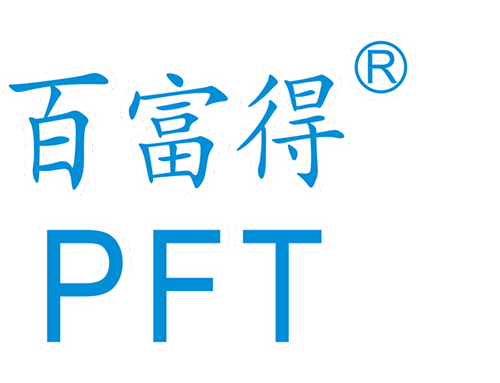The Role of Insect Growth Regulators in Sustainable Farming Practices
Time
2025-08-11
The Role of Insect Growth Regulators in Sustainable Farming Practices Table of Contents 1. Introduction to Insect Growth Regulators (IGRs) 2. Understanding Sustainable Farming Practices 3. Mechanism of Action: How IGRs Work 4. Benefits of Using Insect Growth Regulators in Agriculture 4.1 Reducing Pest Populations 4.2 Enhancing Crop Yields 4.3 Minimizing Chemical Pesticide Use 5. Applications of IG
The Role of Insect Growth Regulators in Sustainable Farming Practices
Table of Contents
1. Introduction to Insect Growth Regulators (IGRs)
2. Understanding Sustainable Farming Practices
3. Mechanism of Action: How IGRs Work
4. Benefits of Using Insect Growth Regulators in Agriculture
4.1 Reducing Pest Populations
4.2 Enhancing Crop Yields
4.3 Minimizing Chemical Pesticide Use
5. Applications of IGRs in Different Crop Systems
5.1 IGRs in Vegetable Production
5.2 IGRs in Fruit Cultivation
5.3 IGRs in Grain and Legume Farming
6. Environmental Impact of Insect Growth Regulators
7. Challenges and Considerations in the Use of IGRs
7.1 Resistance Management
7.2 Economic Factors
8. Future Prospects for Insect Growth Regulators in Sustainable Agriculture
9. Frequently Asked Questions (FAQs)
10. Conclusion
1. Introduction to Insect Growth Regulators (IGRs)
Insect Growth Regulators (IGRs) have emerged as a pivotal innovation in agricultural pest management. By disrupting the hormonal processes that insects rely on for growth and development, IGRs offer a targeted approach to pest control. Unlike traditional insecticides that eliminate pests upon contact or ingestion, IGRs interfere with the insect life cycle, preventing pests from reaching maturity or reproducing. This unique mechanism places IGRs at the forefront of sustainable farming practices, providing an eco-friendly alternative to conventional pesticide use.
2. Understanding Sustainable Farming Practices
Sustainable farming encompasses a range of agricultural practices designed to meet current food production needs without compromising the ability of future generations to meet their own. It prioritizes ecological balance, biodiversity, and soil health while minimizing chemical inputs. By integrating innovative solutions like IGRs, farmers can enhance their sustainability efforts, contributing to a healthier environment and food system.
3. Mechanism of Action: How IGRs Work
IGRs, primarily classified into three categories—juvenile hormone mimics, chitin synthesis inhibitors, and ecdysteroid agonists—target specific developmental processes in insects:
- **Juvenile Hormone Mimics**: These compounds mimic juvenile hormones, preventing the insect from transitioning into its adult form. This stunts their growth and reproductive capabilities.
- **Chitin Synthesis Inhibitors**: By interfering with chitin production, these IGRs prevent insects from forming their exoskeletons, causing them to die during molting.
- **Ecdysteroid Agonists**: These mimic hormones that stimulate molting, disrupting the normal development cycle of insects.
This targeted action allows for effective pest control while significantly reducing the impact on beneficial insects and the surrounding ecosystem.
4. Benefits of Using Insect Growth Regulators in Agriculture
4.1 Reducing Pest Populations
One of the most significant advantages of IGRs is their ability to reduce pest populations effectively. By disrupting the development of target pests, farmers can significantly diminish their presence in crops without resorting to broad-spectrum chemical insecticides.
4.2 Enhancing Crop Yields
With reduced pest populations comes the benefit of increased crop yields. By protecting plants from the stress and damage caused by pests, IGRs can help farmers achieve higher productivity levels, enhancing food security.
4.3 Minimizing Chemical Pesticide Use
The use of IGRs allows for a reduction in chemical pesticide applications. This not only lowers the exposure of crops to potentially harmful chemicals but also mitigates the risk of pesticide resistance developing in pest populations, which is a significant concern in conventional agriculture.
5. Applications of IGRs in Different Crop Systems
IGRs can be applied across various crop systems, each having unique pest challenges and requirements.
5.1 IGRs in Vegetable Production
In vegetable farming, IGRs are particularly effective against pests such as aphids, whiteflies, and caterpillars. Their ability to manage these pests without harming beneficial insects, like pollinators, makes IGRs an ideal choice in vegetable production.
5.2 IGRs in Fruit Cultivation
IGRs provide significant benefits in fruit cultivation by controlling pests like fruit flies and leafrollers. The application of IGRs can lead to healthier fruit production, reducing the reliance on harmful pesticides that may adversely affect fruit quality and marketability.
5.3 IGRs in Grain and Legume Farming
In grain and legume farming, IGRs effectively manage pests such as the corn earworm and various beetles. By reducing pest populations, farmers can protect their harvest from damage and ensure better quality grains and legumes.
6. Environmental Impact of Insect Growth Regulators
The environmental impact of IGRs is considerably less harmful than that of traditional insecticides. Their targeted nature minimizes the risk of affecting non-target species, preserving beneficial insects and promoting biodiversity. Additionally, IGRs contribute to soil health by reducing chemical runoff and maintaining ecological balance within farming systems.
7. Challenges and Considerations in the Use of IGRs
Though IGRs offer numerous benefits, challenges remain in their implementation.
7.1 Resistance Management
The potential development of resistance to IGRs among target pest populations is a concern. Farmers must employ Integrated Pest Management (IPM) strategies, rotating IGRs with other pest control methods to mitigate this risk.
7.2 Economic Factors
The initial cost of IGRs may deter some farmers from adopting them. However, when considering the long-term benefits of increased yields and reduced pesticide use, IGRs can be a financially viable option for sustainable farming.
8. Future Prospects for Insect Growth Regulators in Sustainable Agriculture
The future of IGRs in sustainable agriculture looks promising. Continued research and development will lead to the discovery of new IGR formulations that are even more effective, with reduced environmental impacts. As the agricultural sector increasingly seeks sustainable solutions, IGRs will play a crucial role in promoting eco-friendly practices, ensuring food security, and preserving the planet’s resources.
9. Frequently Asked Questions (FAQs)
1. What are the primary functions of Insect Growth Regulators?
IGRs primarily disrupt the hormonal development of insects, preventing them from growing, maturing, or reproducing.
2. Are IGRs safe for beneficial insects?
Yes, IGRs are typically designed to target specific pest species while leaving beneficial insects unharmed, promoting ecological balance.
3. How should I apply IGRs for maximum effectiveness?
Follow the manufacturer's guidelines regarding dosage and timing to ensure effective pest control and minimize the risk of resistance development.
4. Can IGRs be used in organic farming?
Some IGRs are approved for use in organic farming, but it’s essential to verify the product's certification status with relevant agricultural authorities.
5. What is the role of IGRs in Integrated Pest Management (IPM)?
IGRs are used as part of an IPM approach, combining them with other pest control strategies to manage pest populations sustainably and effectively.
10. Conclusion
Insect Growth Regulators represent a significant advancement in sustainable farming practices, offering farmers an innovative and environmentally friendly way to manage pest populations. By understanding the mechanism of action, benefits, and applications of IGRs, agricultural professionals can harness their potential to enhance crop yields while promoting ecological balance. As we move towards a more sustainable future in agriculture, IGRs will undoubtedly play a critical role in ensuring food security and maintaining the health of our ecosystems. Embracing these advancements will help pave the way for a greener and more productive agricultural landscape.
Latest News






